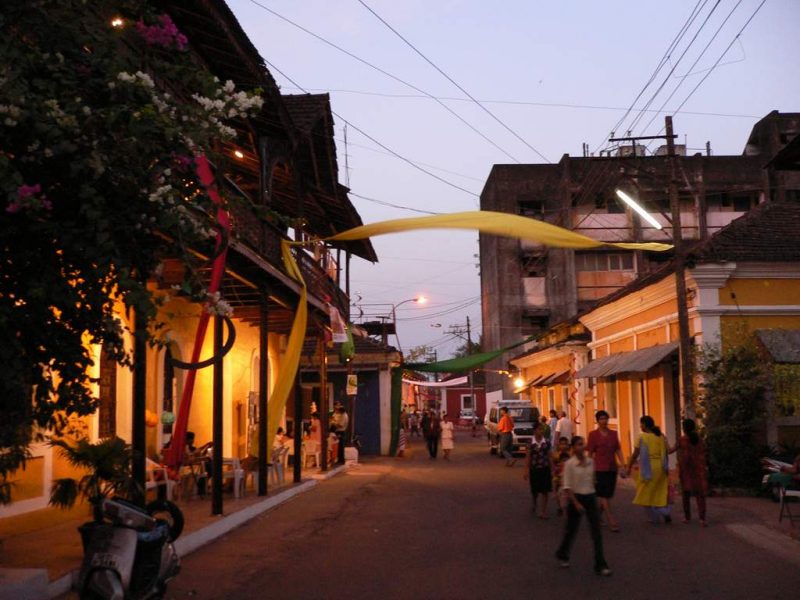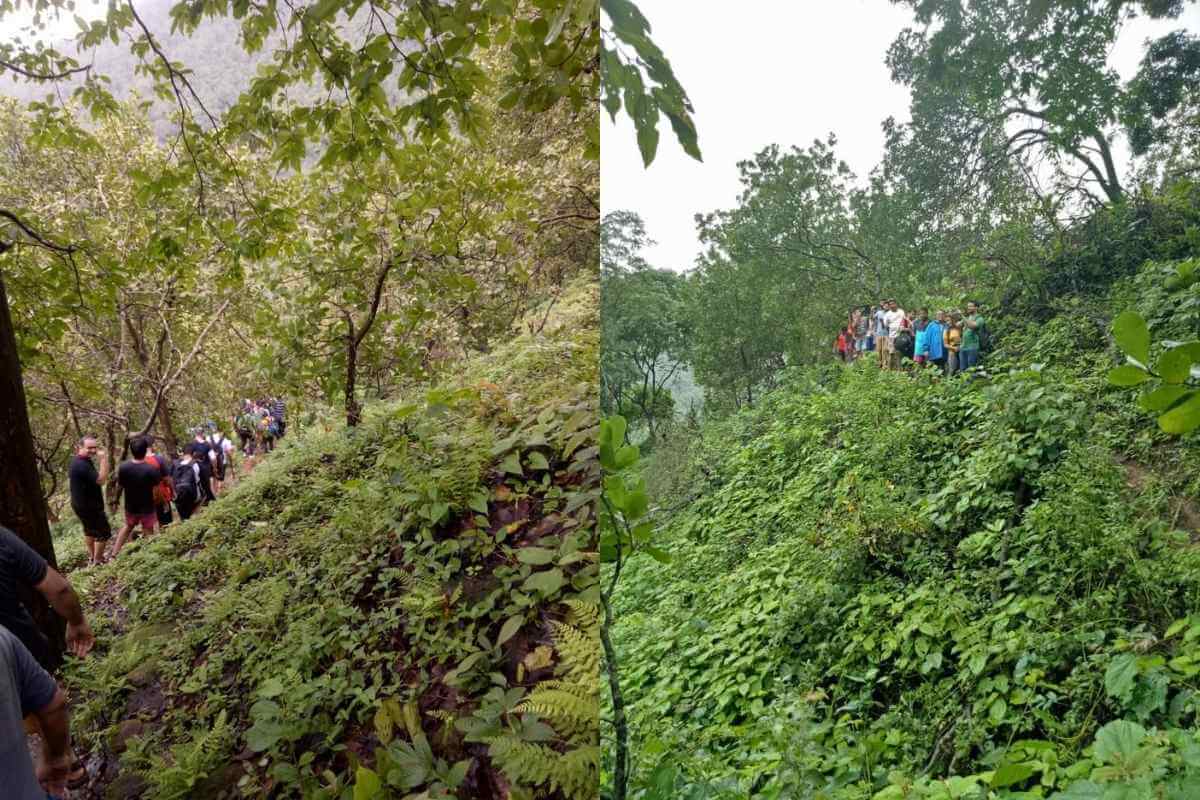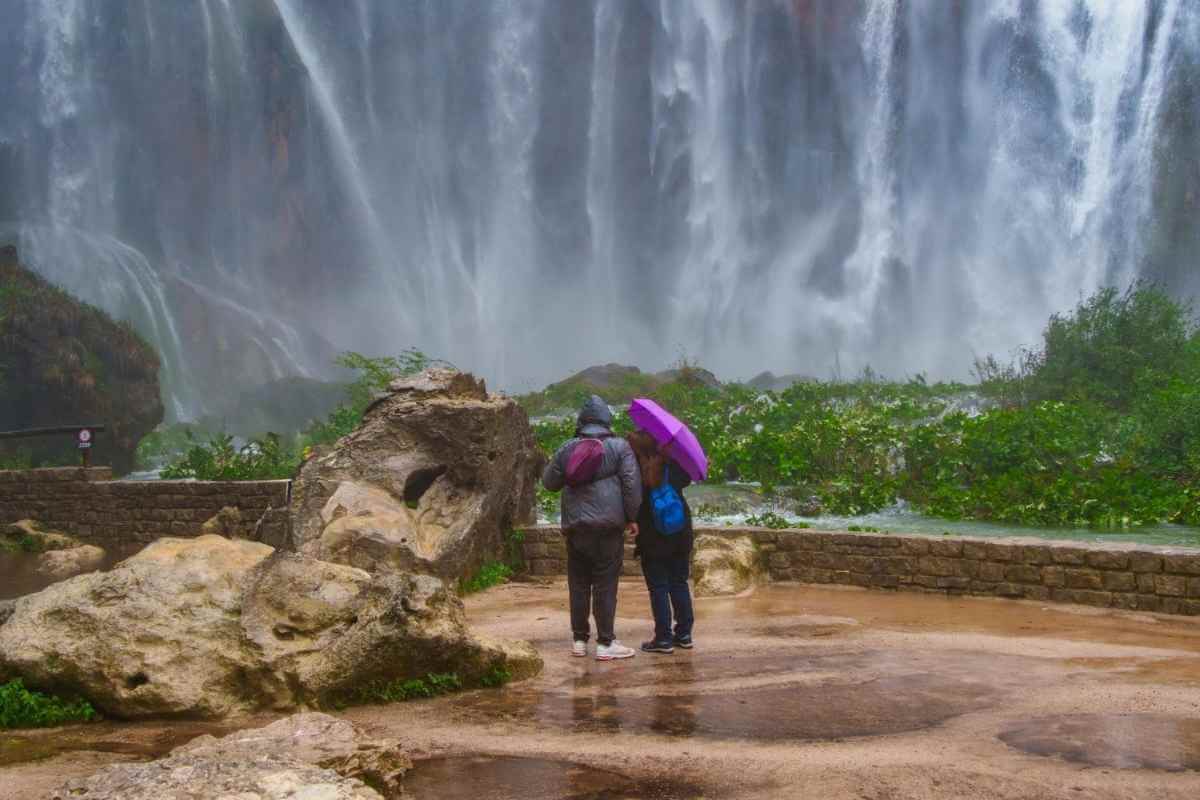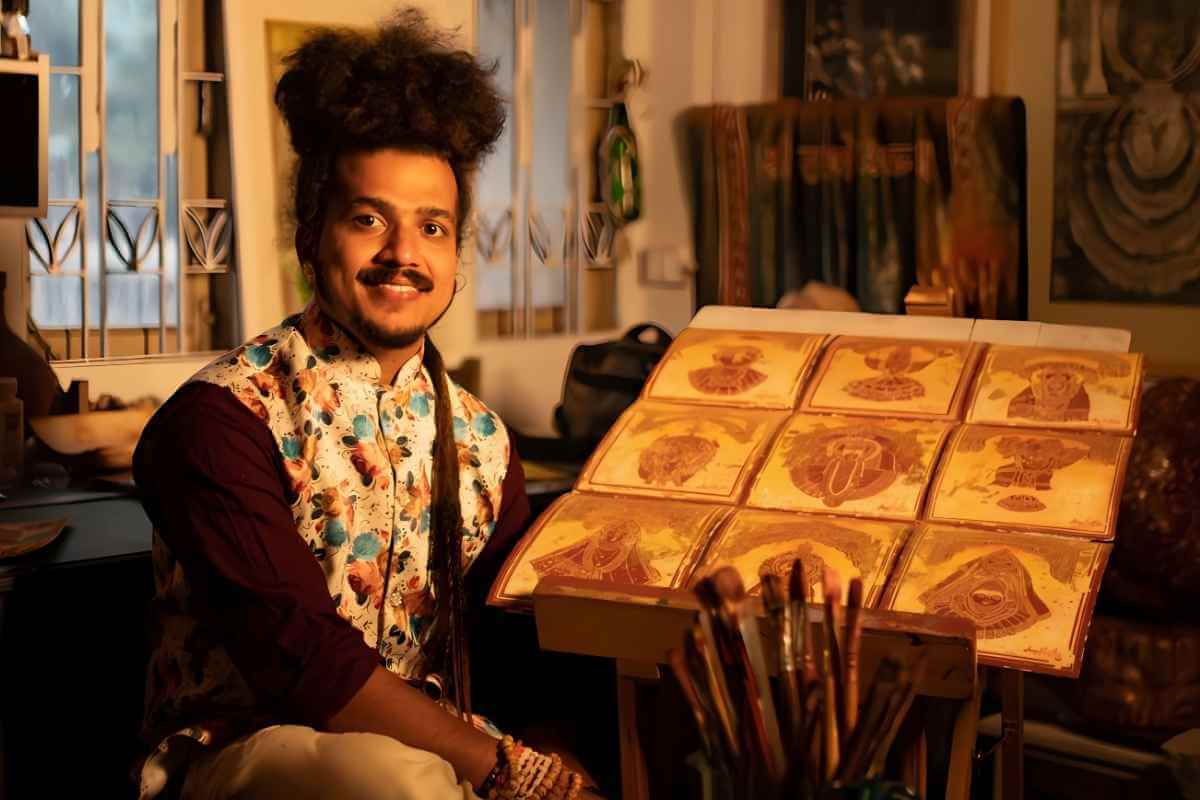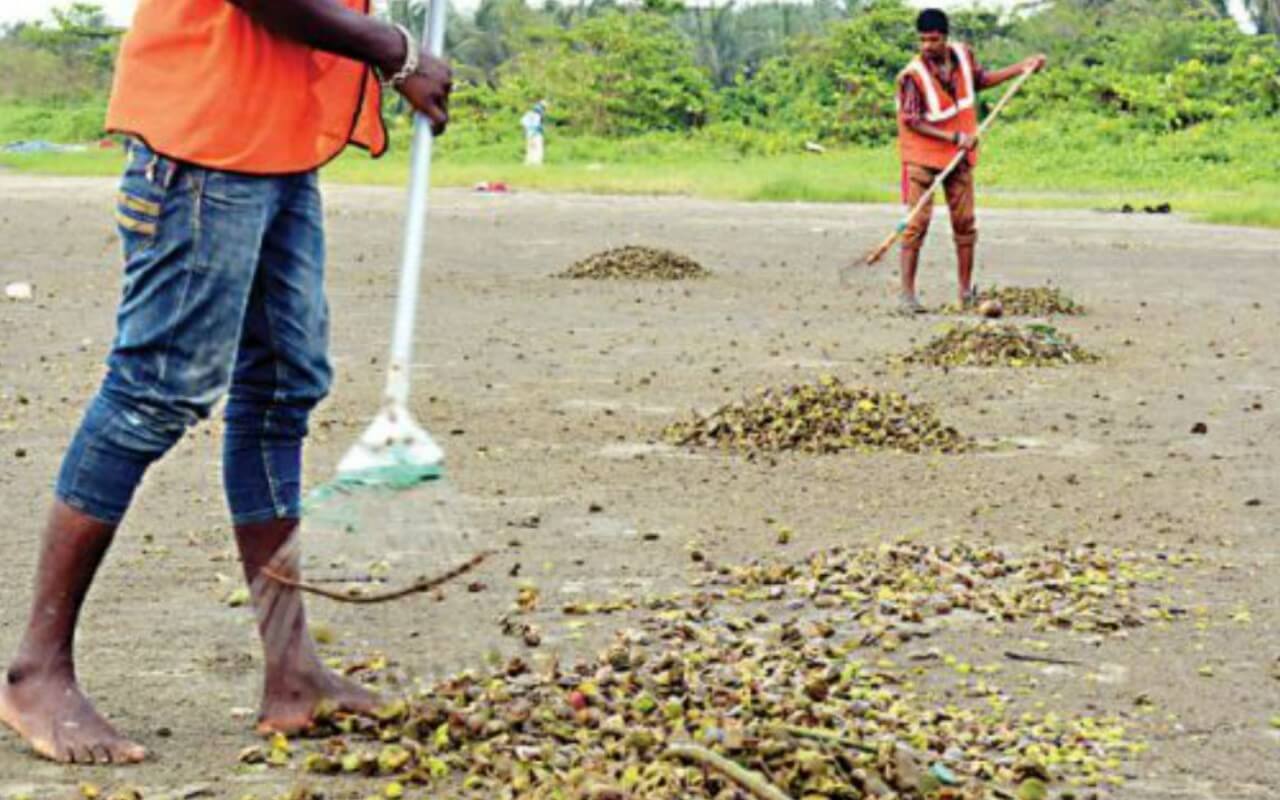Goa is known for being under Portuguese rule for the longest period of time that any other state of India ever been under the rule of single empire. Four hundred and fifty years, that is to be precise to give the depth of the time that Goa had Portuguese ruling the state. Many Goans never wanted Portuguese to leave this state but with the efforts of few revolutionary minds and timely intervene of the Indian army had paved the way of freedom to Goa. The reason behind telling this story is to give little prolog of the background of Goa which will make it easy to understand the following content.
Since Goa was under the Portuguese rule for the longer period of time, it still has the relics of the Portuguese regime lingering in Goa. There is hundreds of structure constructed in the Portuguese regime which reflect their ideology and culture are still standing tall, the bridges constructed by Portuguese are intact till date. The churches of Old Goa and the Latin Quarter of Panaji are some of the most prominent in it. About the Old Goa, there is so much told and written in various books which are based on Goa but this place called “Latin Quarter” still waiting for the recognition.
The name Fontainhas was derived from the “Little Fountain” which existed then and which was the only source of potable drinking water in those days. Fontainhas is also known for its narrow streets and colonial structure which was developed by the Portuguese during the period of their rule in Goa. But if you look at it from the futuristic angle, you will witness that, this place has no proper planning, very narrow streets and uneven structure of the houses. Since Panaji was made the capital city of Goa by the Portuguese following the ruin of Old Goa due to the spread of plague in 17th Century. It was obvious that they have started the colonization in the new capital at the rapid pace. The reason behind the hurry was the need of shelter, as the Portuguese families were moving from Old Goa to Panaji due to a spread of plague there and they were in need of immediate shelter in Panaji. The development started rapidly without the proper planning in this area. The construction started in full swing and the set of the houses were built, wall to wall without any proper sanitary and hygiene, which later on raised the question of grave health concerns as a result of which the then governor of Goa, Jose Faria Pastana was forced to write to the presidents and councilors of the municipal council to take action against this rampant unplanned development.
According to the content of the letter written to Municipality by Governor “The Governor informs the municipal authorities that there is urgent need to take all care and make all possible efforts to improve the Bairro das Fontaihas, where a large number of people live crowded in small houses, with little light, poor ventilation and little cleanliness and lot of humidity and heat. This may cause health problems to the inhabitants and, consequently, grave damage to the city. Therefore, the municipality is asked to take action to see that the people of the ward, as well as others in the city, observe the ‘posturas’ that the Municipality has published. Also to remain watchful and have good management of its Taluka regimen” (Source: The internet)
Governor General also issued the list of instruction to the Municipality, fearing the situation might worsen if the dirt and unhygienic conditions are not controlled and the epidemic might spread at a faster pace in the tropical atmosphere of Goa. The Instruction list says that:-
- Open windows on the walls in all those houses that have none.
- Increase the sizes of the existing ones.
- Increase the height of the houses to have better ventilation.
- Expose Enclosures made of ‘ollas’ (palm leaves)
- Clear the lanes and by-lanes of shacks, which they are trying to get converted into legal acquisitions using roof tiles and buildings walls of stones.
- Tenants should be asked to maintain the cleanliness of the properties and drains of their area in order to allow free flow of water into the river.
Although the structural deformation of the Fontainhas was as the result of the rampant development that took place without proper planning, but it remained like that even after the Portuguese left Goa and till date. If you look at the transformation which the entire Panaji city has gone through in all these years Fontainhas remains the same till date as this place is now declared as a world heritage site and there is no development is possible in the future.
In the present days, Fontainhas is one of the tourist destinations of Goa and especially preferred by the French and Portuguese tourists visiting Goa. Most of the heritage houses have been converted into the “Pousadas” means A Small Guest Houses which people rent out to these French and Portuguese tourists. These Pousadas are ranging from cheap stays to the premium suites of around 1000 sq ft each. This location which is more than 2 centuries old has its own charm, which takes you back into the Goa’s neglected architectural legacy.
Fontainhas, which is the oldest Latin quarter of Panjim (another name for Panaji), is similar to a Mediterranean city, located at the foothills of the mountain, it is bounded on the west side by the Altinho hills with springs, after which it derived its name. On the east side, it is bounded by an ancient creek known as the Ourem creek, also known as Rua de Ourem or Mala. The existence of was once meant for the Portuguese families in Goa, which began to come up in 17th Century after the fall of Old Goa due to spread Plague had been shaped along the lines of Lisbon’s “Bairo Alto” (Which has another name as “Bairo Alto de Fontainhas” has a Moorish tint to it and hence it is also referred to as the “Latin Quarter” of Goa. It was built on reclaimed land.
The term called Latin Quarter was embedded in this place due to its structural look from the other side of the creek which gives the feeling of you being in the Paris. Somehow this place almost resembles the place is Paris known as Latin Quarter, of course, this could not be the error-free information but at the moment only this is what is available. This is perhaps the only residential area in Goa where the Portuguese architecture is preserved, the houses built in the 17 and 18th century were maintained their looks and style for 200 years now. Their original colour combination is still maintained with the red roof tiles and house painted in pale yellow, green or blue colours, and it all due to the help of Fundacão Orienté, an organization involved in the task of restoration of heritage buildings in Goa, which is also having their office here in Fontainhas.
“An evening in the Fontainhas reveals unmarried women sitting on the roofed gallery steps, wearing colourful flowery dresses, scanning newspapers, and chatting with their neighbours in Portuguese. Another scene of old world charm finds violinists playing musical works of Villa-Lobos from their windows, and cages of birds hanging from the ornate balconies are overlooking the small, red-tiled city square. Another nostalgic scene is of old people dressed in well-pressed linen pants and wearing Hamburg hats walking out of taverns and wobbling along the cobbled streets, which are lined with run-down old Volkswagen Beetles. A “Mediterranean douceur” can also be sighted in the lanes”. (Source: Wikipedia)
The crisis cross narrow by lanes, old colonial single storied structure, and Iberian ambience makes it an attractive proposition for the tourists. This place is more preferred by the French and Portuguese tourists. Despite such structure what remains, there is its heritage look which is getting absolute in Goa due to rampant construction taking place. To keep its charm alive and to revitalize this 200 years old heritage site, Goa Heritage Action Group (GHAG) organizes the “The Fontainhas Festival of the Arts” every year here. This weeklong festival of Art, Culture, Music and Heritage puts some spotlight on Panaji’s quaint and picturesque Latin Quarter. The festival was organized last year between January 10 to 16 and the major highlights of the festival were the opening up of the several old heritage houses for the display of work of various artists besides that street performances there were street cafes serving authentic Goan food and the festival was supported by the Goa Tourism.
With its single-storied bungalows crisscrossing narrow by lanes, Fontainhas’ Iberian ambience makes it an attractive proposition for tourists, especially French and Portuguese tourists. A number of houses in the area have already been converted into ‘pousadas’ (small guest houses) ranging from the tacky to the upmarket. The Mitaroy, Goa – A Heritage Homestay is the latest addition with its 4 Heritage Suites of 1000 sq ft each.
The narrow cobbled streets, red-tiled villas with hanging balconies and brightly coloured houses give it an almost Mediterranean appearance. There are little bakeries and cafes lining the street which enhance the quaint European feel. There’s also the beautiful Chapel of St. Sebastian on the southern end of Fontainhas. (Source: Wikipedia)
Fontainhas is notable for being home to the pretty Chapel of St Sebastian, built in 1818. This small whitewashed church at the end of a lovely lane contains one of only a few relics remaining as testament to the Goan Inquisition, a striking crucifix, which originally stood in the Palace of the Inquisition in Old Goa. Christ’s unusual open eyes are said to have been conceived especially to strike fear into the hearts of ‘heretical’ suspects brought before the Inquisitors, and awaiting their usually grisly fate. Every year in mid-November a street fair sets up outside the chapel to celebrate the Feast of Our Lady of Ligament. (Source: Wikipedia)
Just Like most of the Panjim, Fontainhas was originally marshland which was completely converted into a residential area in the early 19th century. As mentioned by me earlier when the Old Goa was abandoned due to the spread of plague and viceroy moved to Panjim, the ponds and swamps were covered with the landfills and houses started taking shape over it. The first chapel on this side of the hill was built in 1818 and dedicated to Saint Sebastian. It was only in the 19th century this place took the form of present scenario which had incorporated some planning and improved water supply.
The starting of the Corte de Oitero, now renamed as Emidio Gracia Road, cutting through the hill and linking it with the main part of the town, made it more accessible and at about the same time, in 1879 the road was opened that runs along the banks of the Mandovi and by which earlier the traffic from the south and the airport, enters Panjim, which now runs through the main Panaji – Margao highway, but let me tell you in the absence of this highway this was the only way to enter Panaji from south Goa. The name, Rua Nova De Ourem, was kept after the Governor who initiated this Project.
The tiny quarter of San Thome is ‘centred’ on the square of that name containing Panjim’s main Post and Telegraph office, known at one time as ‘Tobacco Square’ because the building, now the Post Office, occupying its southern side was the tobacco house.
On the right-hand side the square appearing from the Panaji Post office known as Casa Moeda, the “Mint House” Originally a private house, it was acquired by the Royal Treasury in 1834 and the mint transferred there from the Arsenal in Old Goa. This followed the report of a commission of inquiry into the unsatisfactory quality standards of the coins being produced in Old Goa. After a short time, the Mint was moved back to the Arsenal but only survived until 1870. It was then shut down by the Portuguese government, again because of the poor quality of its performance, but this time arrangements were made for coins for Goa to be supplied by the British Mint in India. There are some interesting samples of Portuguese coins in the museum at Old Goa.
In 1863, the Treasury sold the house in ‘Tobacco Square’ and two years later its new owner leased it to the British who used it as the British Telegraph Office until 1902. The tiny church of San Thome, tucked away in a corner of the square, was built in 1849 and rebuilt in 1849 and rebuilt again in 1902, still very active and thronged not overflowing, especially on festive occasions.
There is lot more tell about this which we may take up in some other issue as there is a place constraint at the moment. Goa’s heritage has never-ending tales to tell and it will be our constant effort to keep you informed about it. In case, you also have any story to share with us about the Goa.


